Jul 23, 2025
Capitalism vs. Socialism: A Deep Dive into Economic Systems
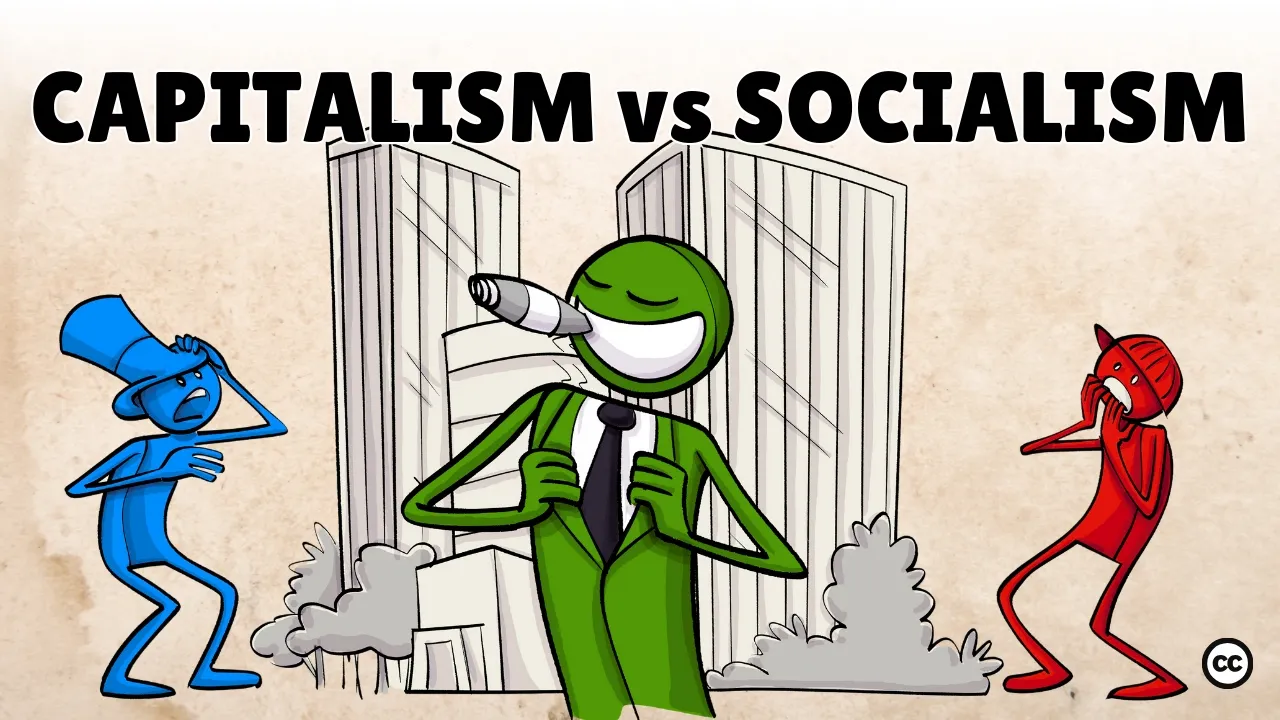
Capitalism
There are two ways in which we can organize ourselves in a society: Capitalism and Socialism. Capitalism is a system in which people own stuff and run things. You decide which goods to make, who to work with, what services to offer, and how much to charge. To do this effectively, we form groups, call them companies, and compete with each other. Capitalists believe that these groups create lots of wealth for their founders, their partners, their employees, and society as a whole.
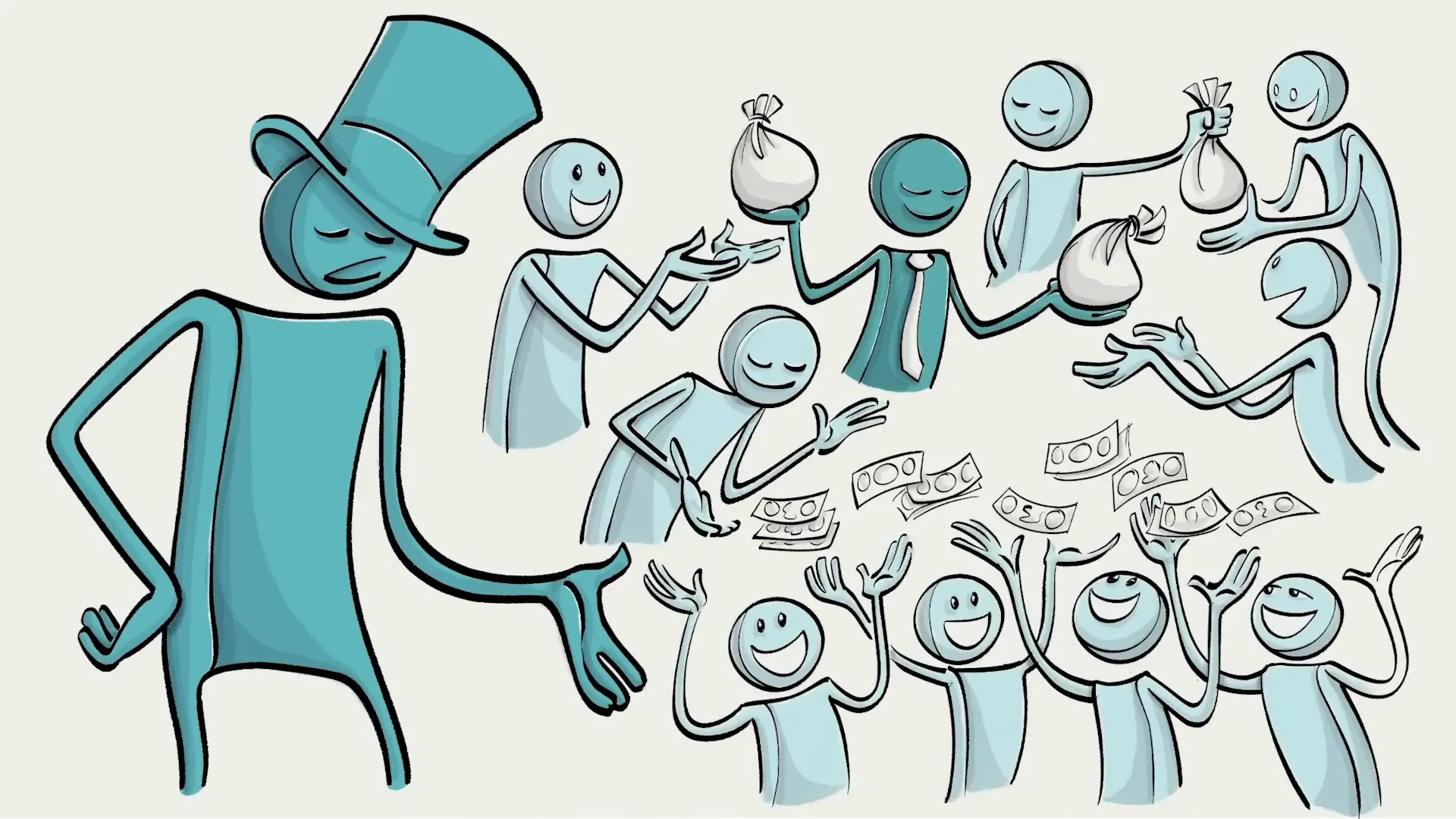
Socialism
Socialism relies on government officials to get things done. There are different ideas about how to create such a system, but most socialists agree that the state should own some property, regulate what we can or can’t do, and offer social services. Socialists believe that political leaders can establish rules to share a nation's wealth fairly which then makes all people better off. So both, the socialist and the capitalist, waasdfnt to maximize wellbeing for all of us, but have inherently different ideas of how to do that—and are afraid of each other.
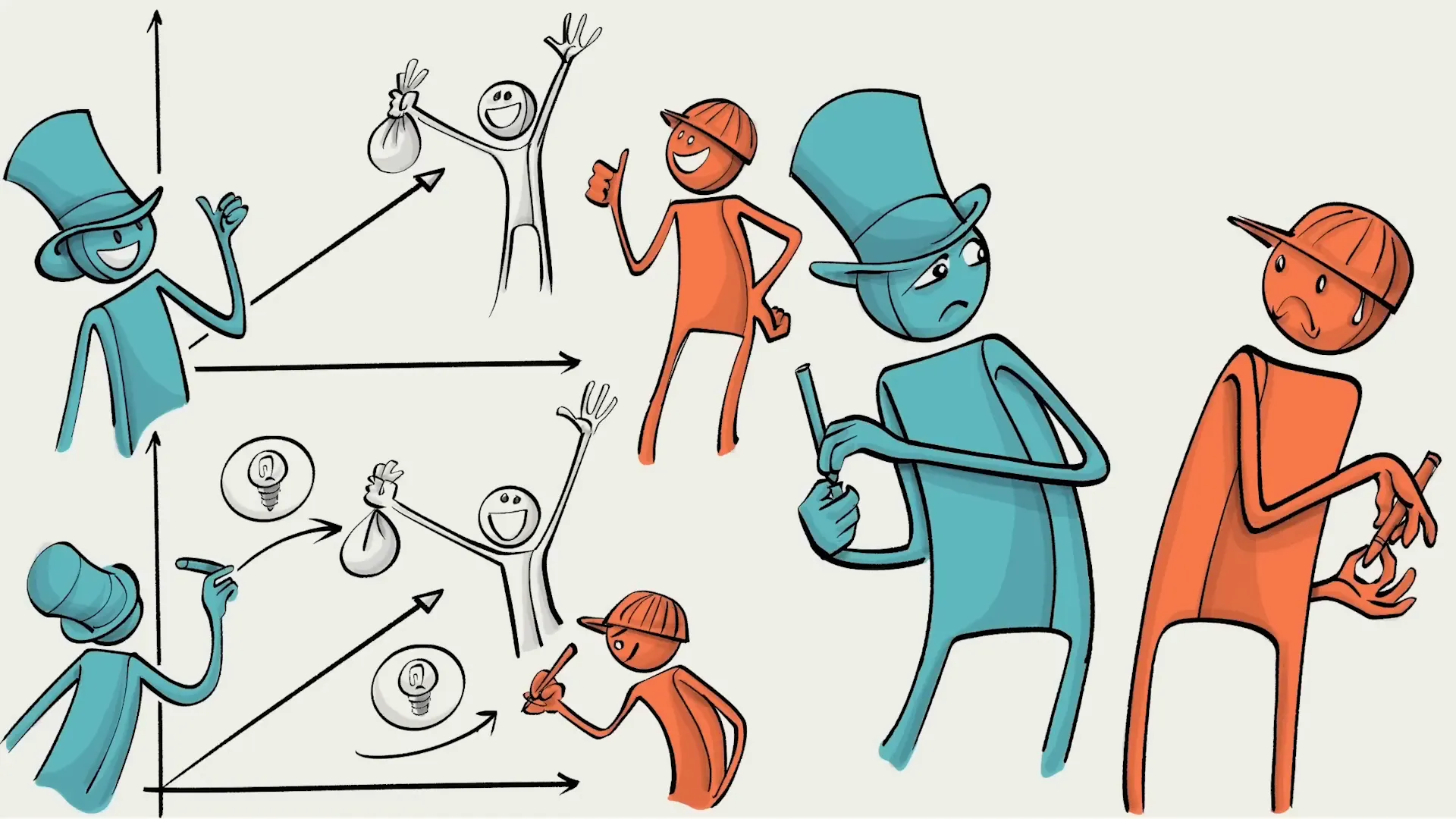
Capitalist utopia
To maximize wellbeing, capitalists support the freedom of the individual. They want a world where Simple Joe can sell his own apples, in front of his house, at the price he chooses, hire anyone interested to help for the money he is willing to pay, and keep most of his profits. In an anarcho-capitalist utopia, there would not even be a state, all schools would be private, and police, courts and military would only exist if they could be formed on a voluntary basis.
The capitalist fears the socialist, because they have reason to believe that once we transfer money, property and power to the collective, it will be those who control us who will first help themselves, then limit individual freedoms and make us dependent on welfare programs, and finally impoverish society.
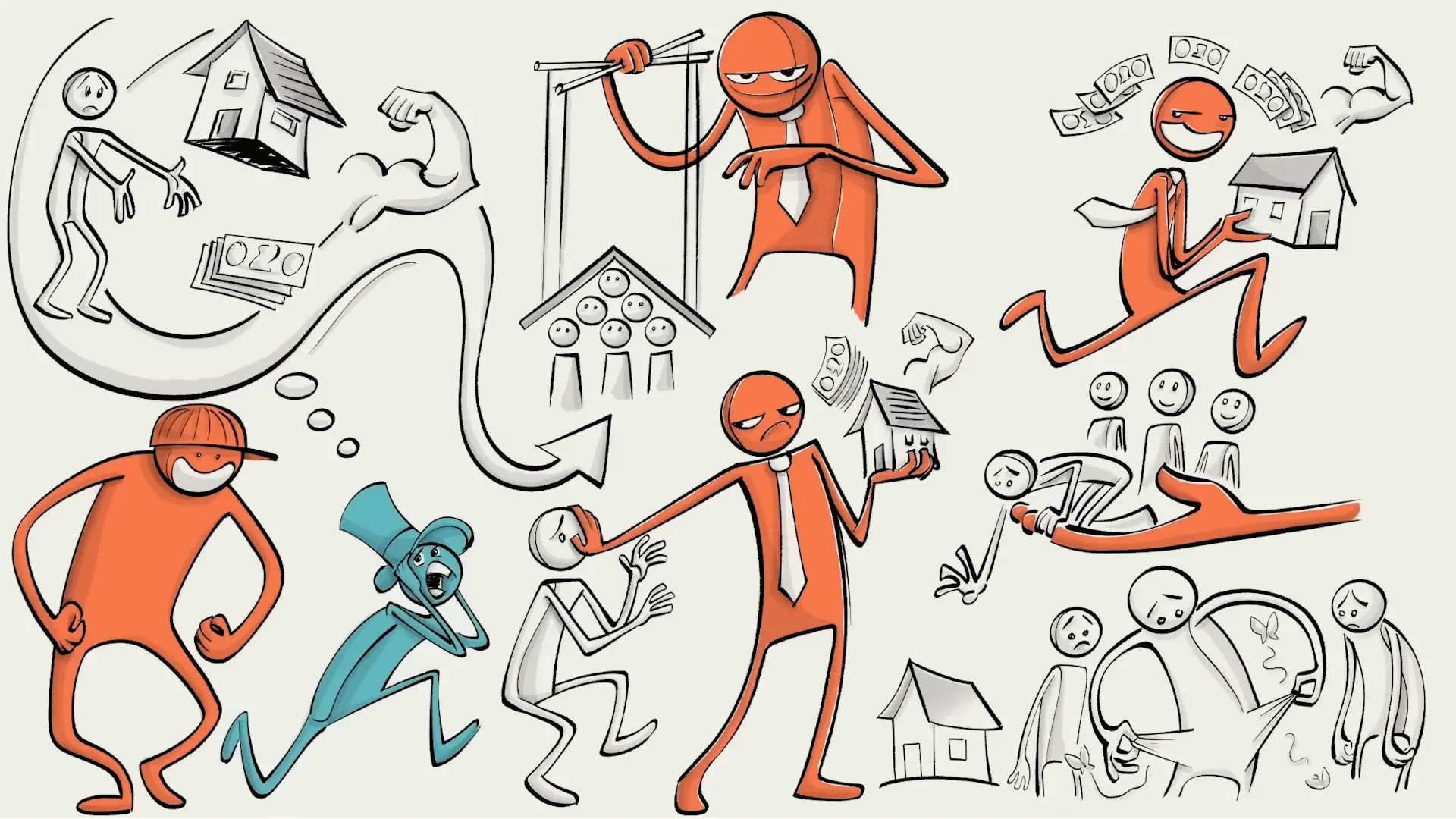
Socialist utopia
Socialists want to maximize well being by regulating our behavior. They prefer a world in which Simple Joe only sells apples of a certain type, does so only in designated areas, pays his helpers a minimum wage, charges affordable prices, and shares most of his profits with those who have less. In a socialist utopia, all of us would get to have equal access to education, enjoy the same standard of living, and benefit from plenty of state-funded services, including an unconditional basic income.
The socialist fears the capitalist, because they have reason to believe that if people are allowed to keep all their money, property and liberties, they would act immoral, pollute the environment, or abuse their power and eventually make living conditions worse for everyone—except the very rich.f
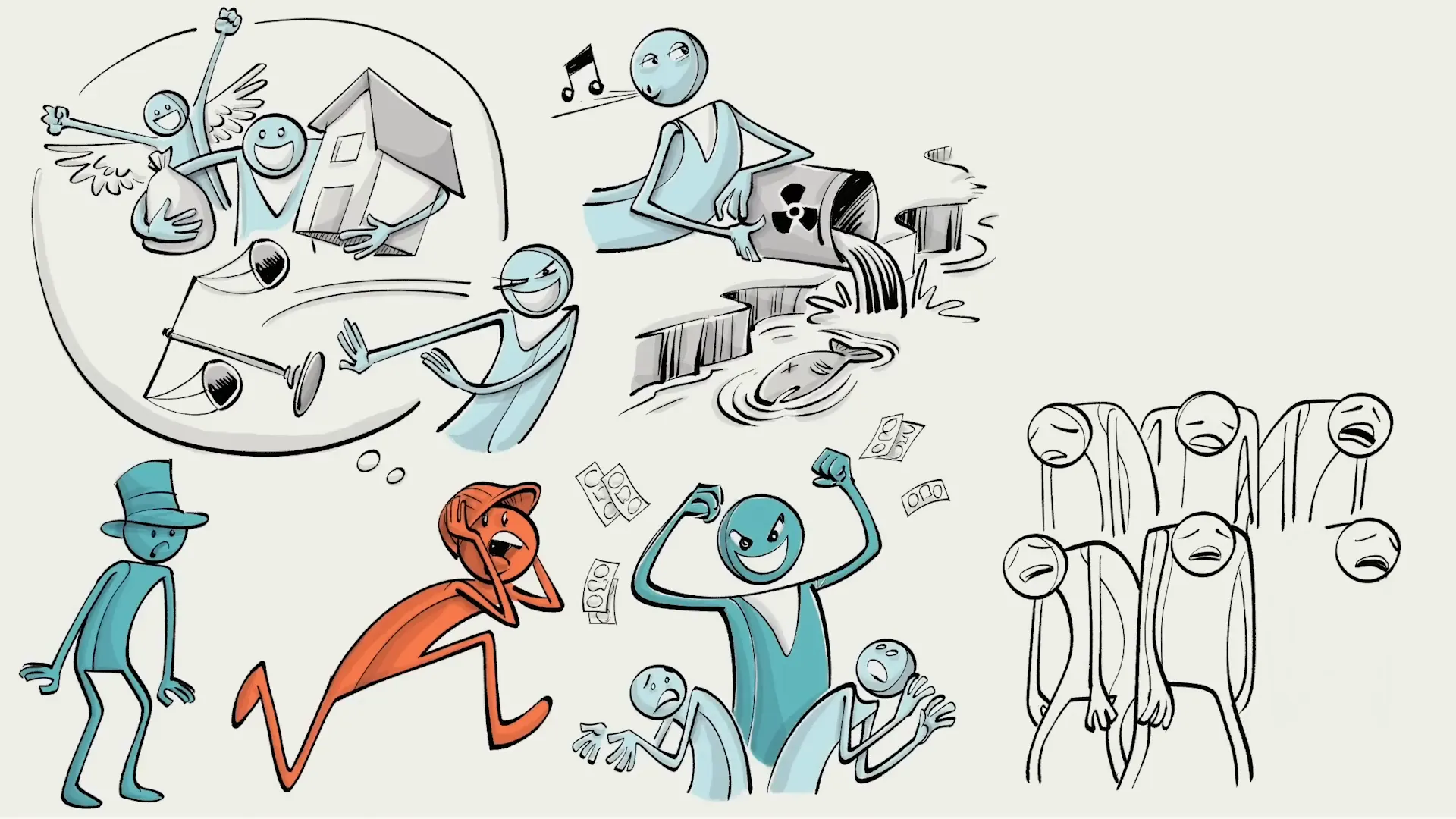
Their similarities
What most people don’t know is that both socialists and capitalists fear big business. Capitalists fear big companies because they use their power to influence the government to create laws that make it hard for smaller companies to compete. Capitalists are hence not pro-business, they are pro-market. Socialists fear large corporations, because they use their power to establish regulations that benefit themselves but make everyone else worse off. Socialists are not pro-business, they are pro-state.
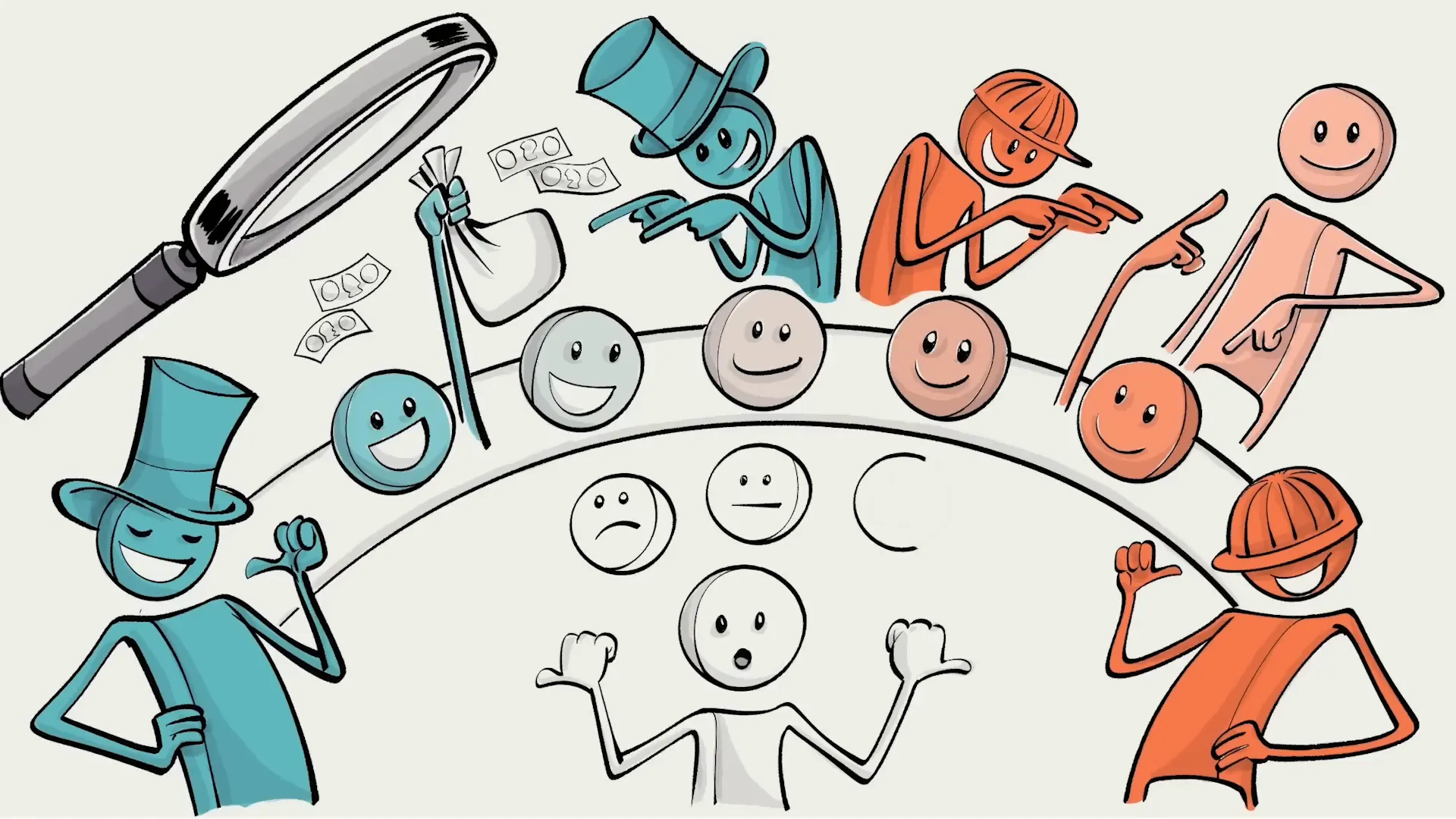
Economic freedom around the world
Now to understand which of the two is better, we can study people who live along a spectrum of the two extremes by looking at wealth, the key promise of capitalists, equality, the main promises of socialists, and levels of happiness. Let’s first examine Economic Freedom Around The World. Capitalist countries have higher levels of economic freedom. When countries offer less freedom it's often due to socialism, but may also be thanks to religious fanaticism, civil war, or other factors.
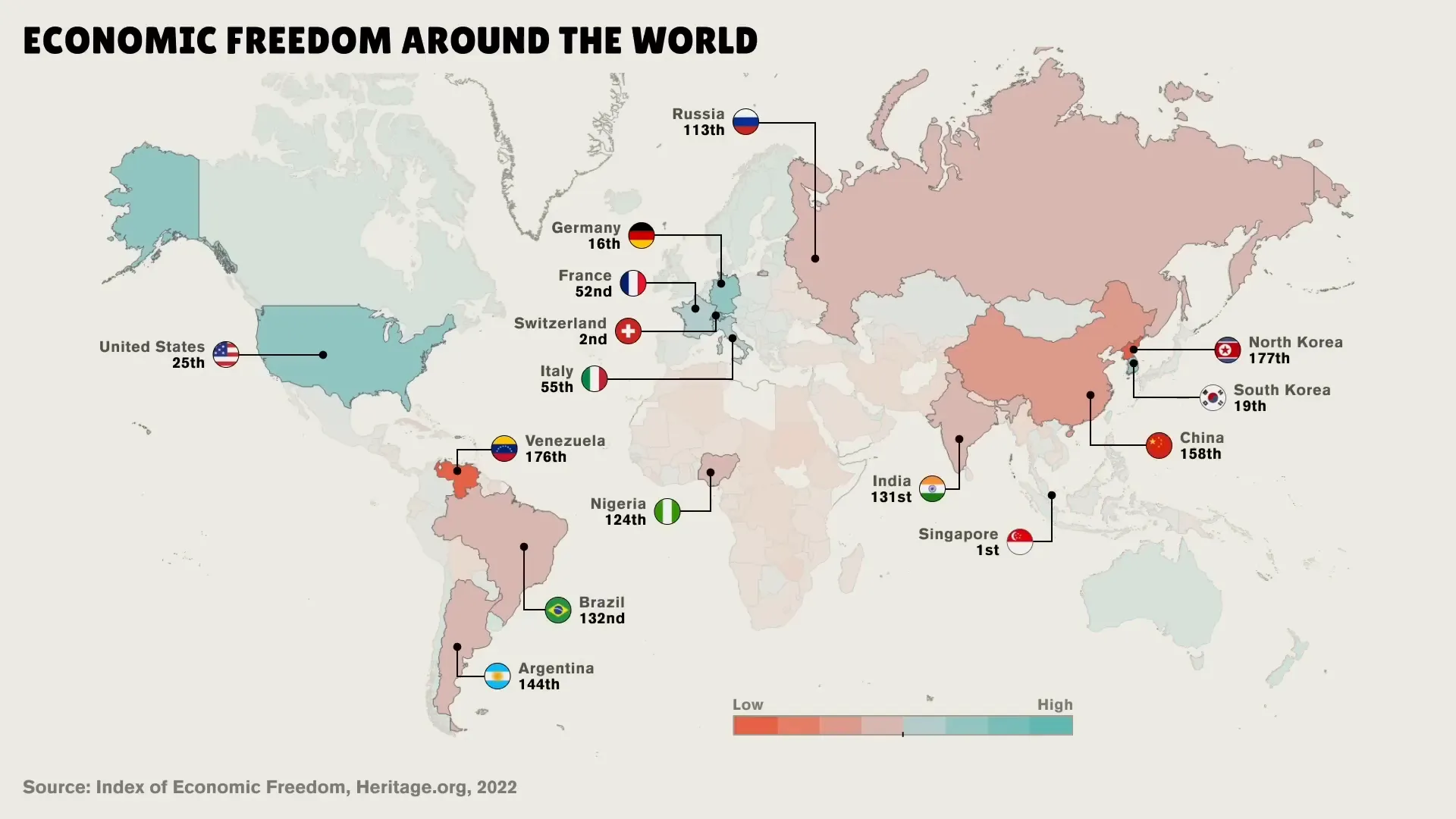
Mixed economies
If we look at 15 specific states, we see that Singapore ranks top in economic freedom, Switzerland 2nd, the US ranks 25th, and North Korea is last. If we plot the data from 177 countries ranging from low to high levels of freedom, we see that we can divide them into three types: highly free, more mixed, and not so free societies—and can then make the following observations.
There is no pure capitalist country. The Swiss restrict some forms of voluntary exchange, offer some public services, and collect taxes to pay for all of that. And 5% of all people in Singapore, the most capitalist place of all, work for the government, the state builds public housing, and if you take the liberty to chew gum, you might get fined.

GDP per capita
In the United States, businesses are privately owned, which is clearly capitalist. However, the government controls education and health care, and hands out subsidies to specific groups, such as chip makers, bankers, and farmers. And around 15% of all Americans work in the public sector. In Russia 1 out of 4 people serve the state. The rest are working in private firms, many of which however are highly regulated by the government.
If we look at GDP per capita, as a measure of wealth, we see that again Singapore ranks top, Switzerland 7th, the US 14th, and North Korea is again last. Note that GDP figures usually include public services, such as free schooling and public healthcare. A comparison of GDP with Economic Freedom shows that countries with higher freedom are also richer, with some reaching a gross domestic product of close to $200,000 per person.
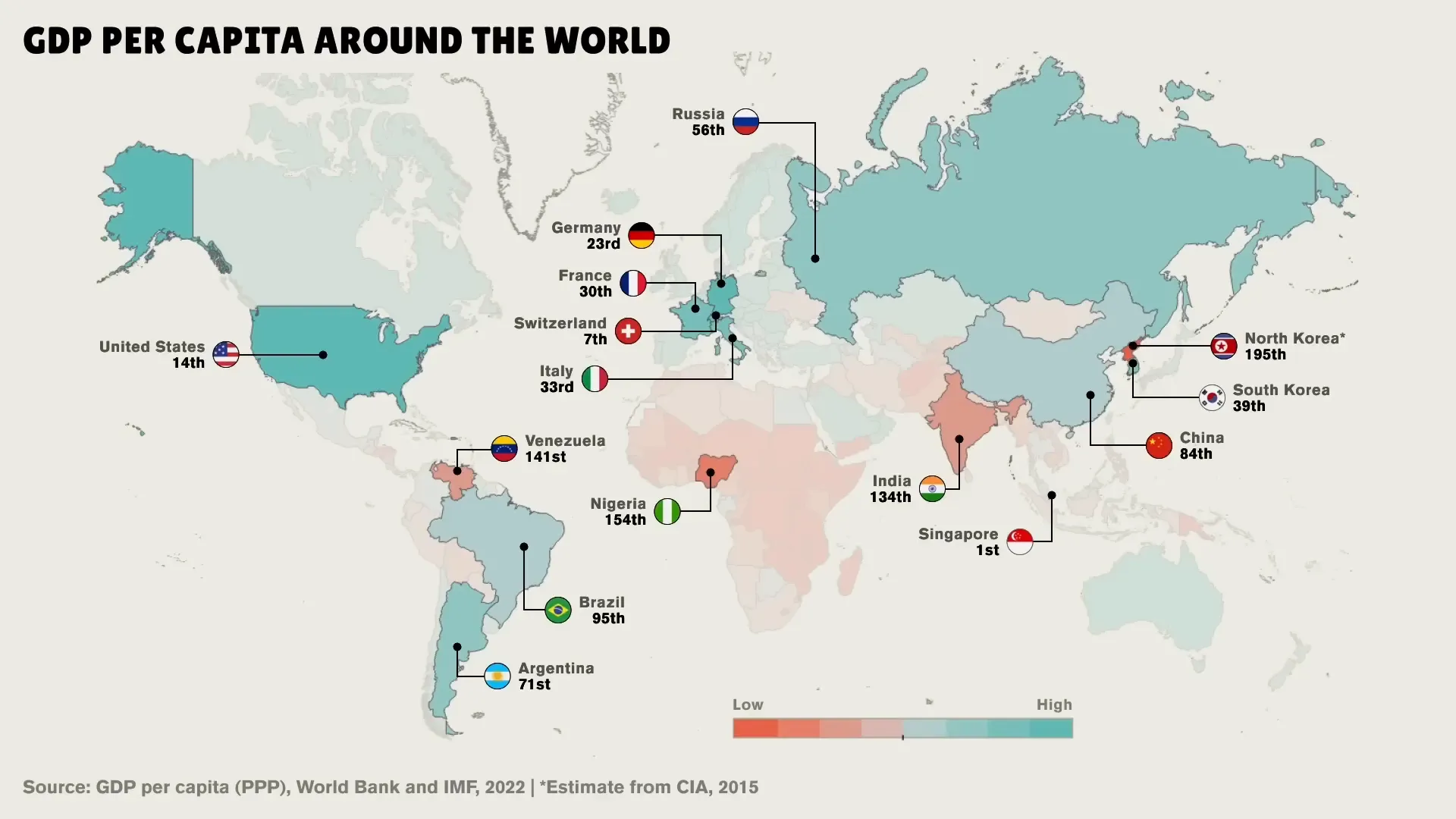
Happiness around the world
Happiness around the world looks a lot like the previous maps, with the difference that quite a few rather poor countries also show a decent level of self-reported well-being. Switzerland, which is economically free and rich, ranks 4th. Singapore, which is even richer, only 27th. And people in Brazil, which is relatively poor, are surprisingly happy. Lithuania is the country where young people say they are the happiest. The most miserable place for those below age 30 seems to be Afghanistan, which is extremely restrictive.
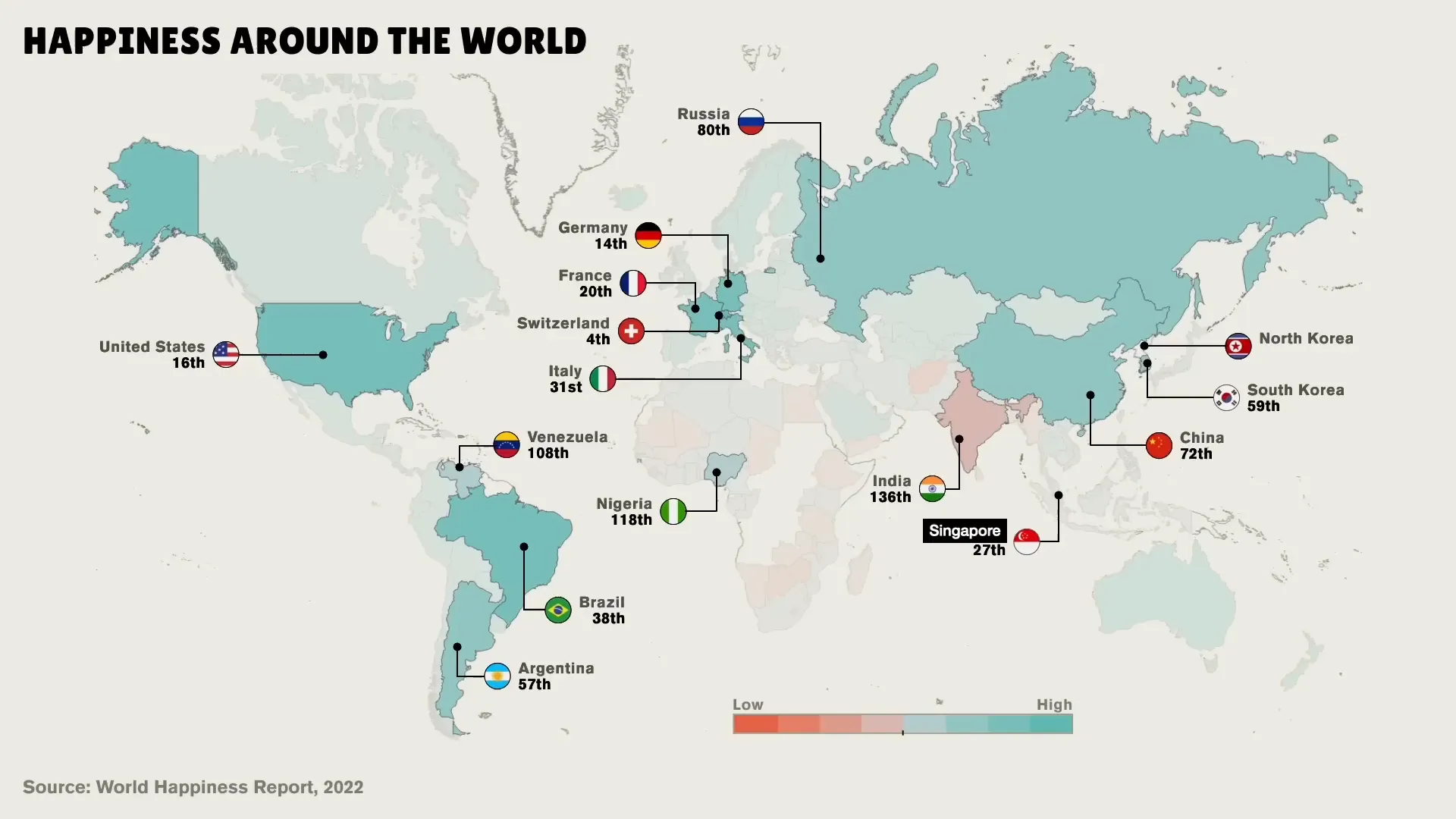
Inequality around the world
If we look at HAPPINESS vs ECONOMIC FREEDOM we can see that countries with higher freedom tend to have higher levels of happiness, while those with lower freedom generally report lower levels—although people in Venezuela seem relatively content. Comparing economic freedom, GDP, and happiness, it looks as if freedom correlates with wealth but neither necessarily coincides with well-being.
Lastly, let's look at inequality around the world with data from the Gini index, which measures how much wealth belongs to the richest people in a country. Doing so we see that the picture looks mixed. Rich, capitalist countries, like Singapore and the United States, seem quite unequal. But so do socialist societies, like Venezuela and China. The country where wealth is distributed most equally is Slovakia, which is moderately free. The most unequal society is South Africa–a place that is rather unfree, but also has a history of racial segregation.
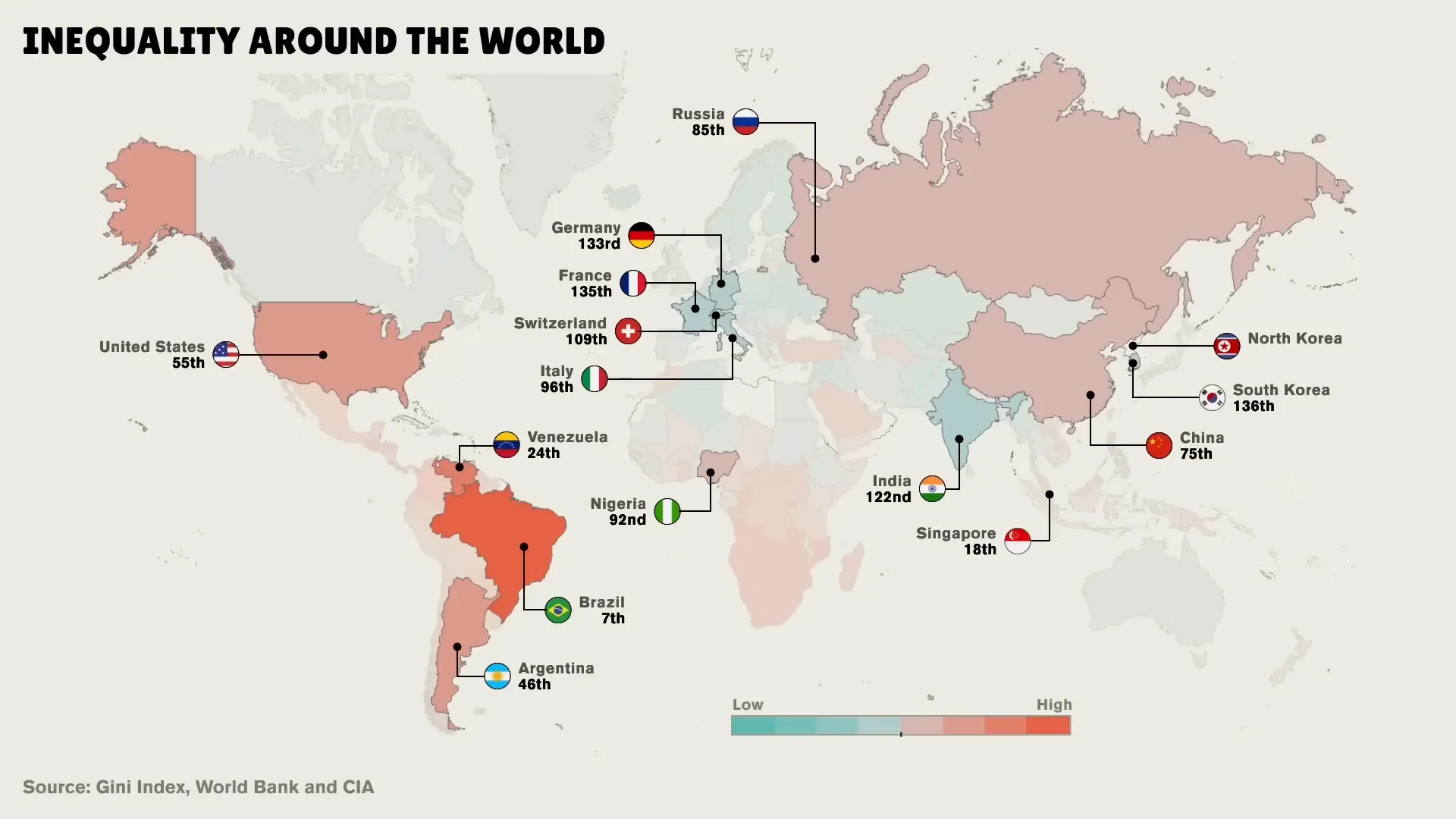
Which one do you prefer?
And if we plot both inequality and economic freedom on the same chart, we can’t see a clear trend. It seems as if neither socialism nor capitalism is very good at creating equality. But now you tell us which system you prefer—and where you are from. And if you can’t make up your mind, consider looking at more data, like, the Human Development Index, the PISA ranking on education, or the World Migration Report—to learn where people actually want to live.
This article was created from the video Capitalism vs. Socialism: Which Works Better? [Deep Dive into Public Data Analysis] with the help of AI. It was reviewed and edited by a human.



